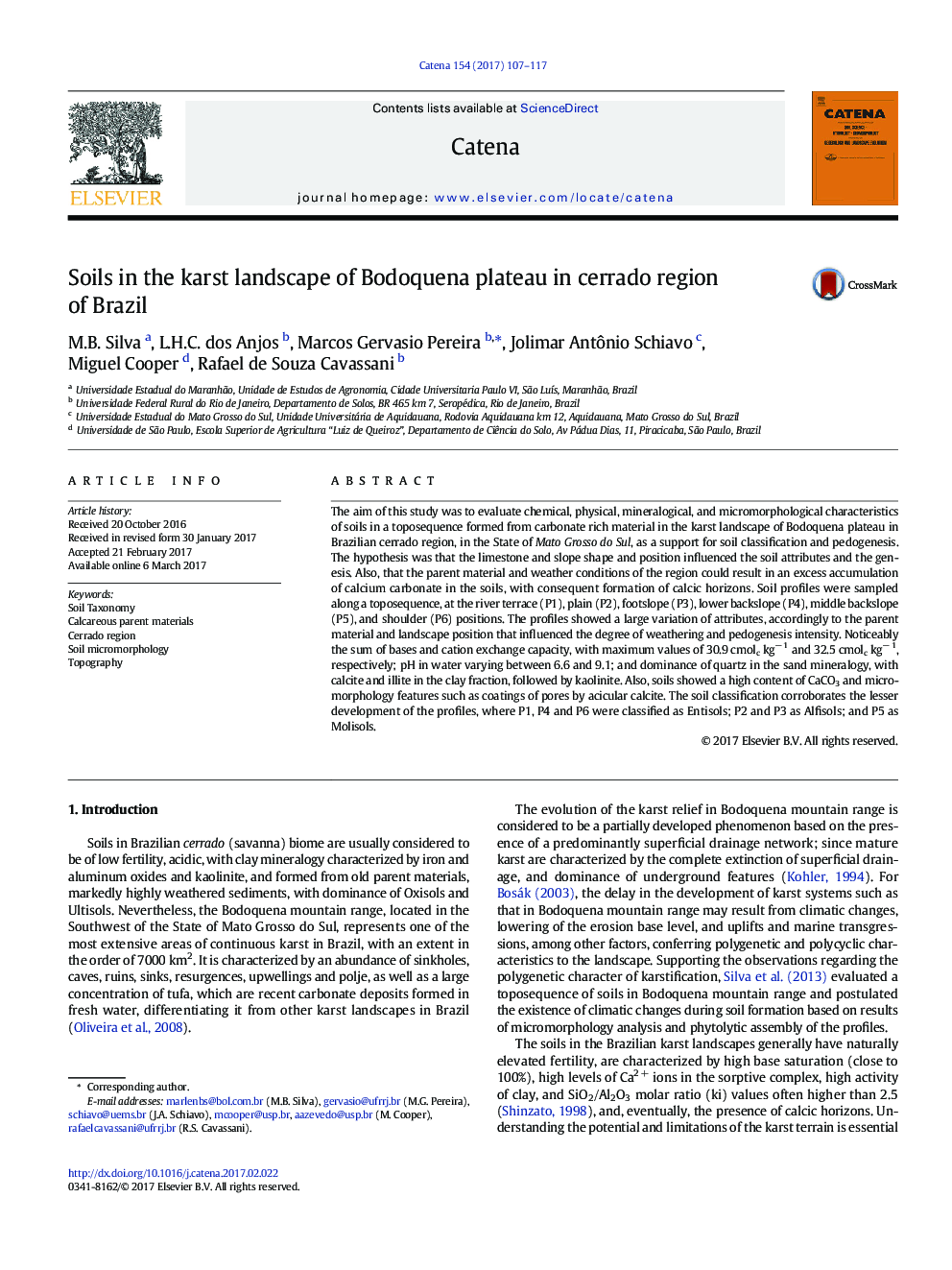| کد مقاله | کد نشریه | سال انتشار | مقاله انگلیسی | نسخه تمام متن |
|---|---|---|---|---|
| 5769936 | 1629200 | 2017 | 11 صفحه PDF | دانلود رایگان |

- Karst landscapes occur in Brazil mainly in the dry regions.
- Were observed mineralogy and micromorphology features associate to calcic horizons.
- The main factors of soil formation were the parent material, relief and paleoclimates.
The aim of this study was to evaluate chemical, physical, mineralogical, and micromorphological characteristics of soils in a toposequence formed from carbonate rich material in the karst landscape of Bodoquena plateau in Brazilian cerrado region, in the State of Mato Grosso do Sul, as a support for soil classification and pedogenesis. The hypothesis was that the limestone and slope shape and position influenced the soil attributes and the genesis. Also, that the parent material and weather conditions of the region could result in an excess accumulation of calcium carbonate in the soils, with consequent formation of calcic horizons. Soil profiles were sampled along a toposequence, at the river terrace (P1), plain (P2), footslope (P3), lower backslope (P4), middle backslope (P5), and shoulder (P6) positions. The profiles showed a large variation of attributes, accordingly to the parent material and landscape position that influenced the degree of weathering and pedogenesis intensity. Noticeably the sum of bases and cation exchange capacity, with maximum values of 30.9 cmolc kgâ 1 and 32.5 cmolc kgâ 1, respectively; pH in water varying between 6.6 and 9.1; and dominance of quartz in the sand mineralogy, with calcite and illite in the clay fraction, followed by kaolinite. Also, soils showed a high content of CaCO3 and micromorphology features such as coatings of pores by acicular calcite. The soil classification corroborates the lesser development of the profiles, where P1, P4 and P6 were classified as Entisols; P2 and P3 as Alfisols; and P5 as Molisols.
Journal: CATENA - Volume 154, July 2017, Pages 107-117